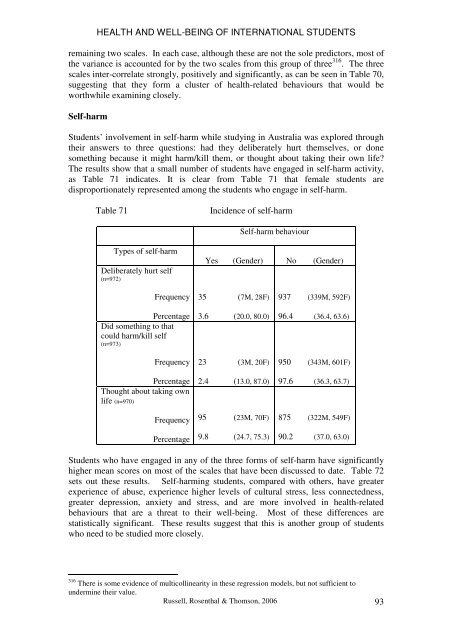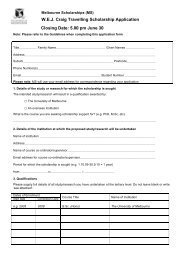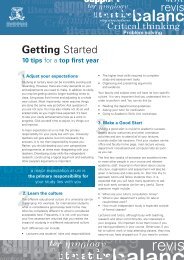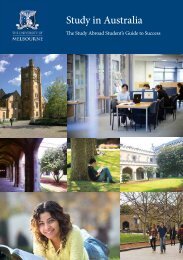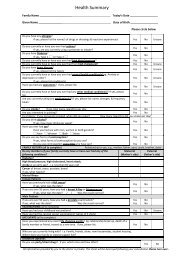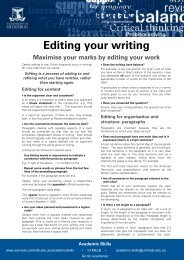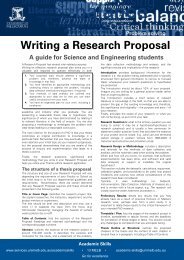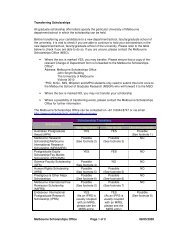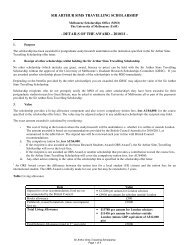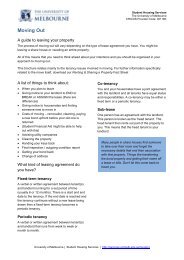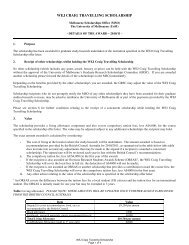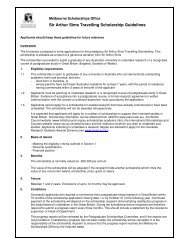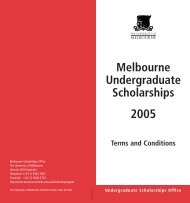a growing experience - Student Services - University of Melbourne
a growing experience - Student Services - University of Melbourne
a growing experience - Student Services - University of Melbourne
Create successful ePaper yourself
Turn your PDF publications into a flip-book with our unique Google optimized e-Paper software.
HEALTH AND WELL-BEING OF INTERNATIONAL STUDENTSremaining two scales. In each case, although these are not the sole predictors, most <strong>of</strong>the variance is accounted for by the two scales from this group <strong>of</strong> three 316 . The threescales inter-correlate strongly, positively and significantly, as can be seen in Table 70,suggesting that they form a cluster <strong>of</strong> health-related behaviours that would beworthwhile examining closely.Self-harm<strong>Student</strong>s’ involvement in self-harm while studying in Australia was explored throughtheir answers to three questions: had they deliberately hurt themselves, or donesomething because it might harm/kill them, or thought about taking their own life?The results show that a small number <strong>of</strong> students have engaged in self-harm activity,as Table 71 indicates. It is clear from Table 71 that female students aredisproportionately represented among the students who engage in self-harm.Table 71Incidence <strong>of</strong> self-harmSelf-harm behaviourTypes <strong>of</strong> self-harmDeliberately hurt self(n=972)Yes (Gender) No (Gender)FrequencyPercentageDid something to thatcould harm/kill self(n=973)FrequencyPercentageThought about taking ownlife (n=970)FrequencyPercentage35 (7M, 28F)3.6 (20.0, 80.0)23 (3M, 20F)2.4 (13.0, 87.0)95 (23M, 70F)9.8 (24.7, 75.3)937 (339M, 592F)96.4 (36.4, 63.6)950 (343M, 601F)97.6 (36.3, 63.7)875 (322M, 549F)90.2 (37.0, 63.0)<strong>Student</strong>s who have engaged in any <strong>of</strong> the three forms <strong>of</strong> self-harm have significantlyhigher mean scores on most <strong>of</strong> the scales that have been discussed to date. Table 72sets out these results. Self-harming students, compared with others, have greater<strong>experience</strong> <strong>of</strong> abuse, <strong>experience</strong> higher levels <strong>of</strong> cultural stress, less connectedness,greater depression, anxiety and stress, and are more involved in health-relatedbehaviours that are a threat to their well-being. Most <strong>of</strong> these differences arestatistically significant. These results suggest that this is another group <strong>of</strong> studentswho need to be studied more closely.316 There is some evidence <strong>of</strong> multicollinearity in these regression models, but not sufficient toundermine their value.Russell, Rosenthal & Thomson, 2006 93


